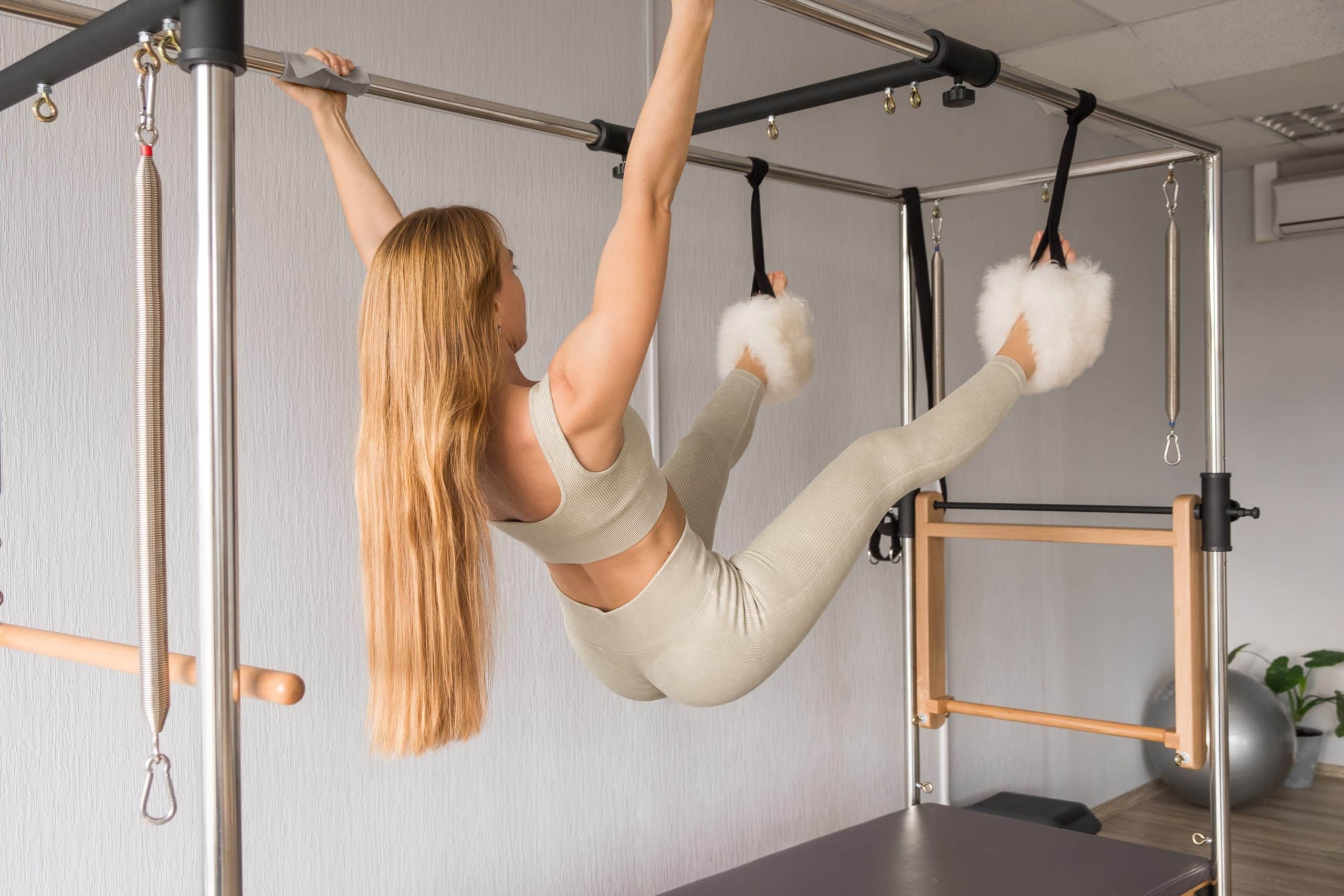Back pain is a common issue for many people nowadays, with sedentary lifestyles and poor posture being the main culprits. But did you know that Pilates, a method of exercise that emphasizes the balanced development of the body through core strength, flexibility, and awareness to support efficient, graceful movement, might have the solution for you? Let’s have a look at how Pilates can help you to deal with these issues, according to several scholars and research found on PubMed.
The Link Between Back Pain and Muscles
Before delving into the role of Pilates in improving flexibility and reducing lower back pain, it’s crucial to understand the connection between our back, our muscles, and the pain we often feel.
A lire aussi : What Behavioral Interventions Help Improve Eating Habits in Obese Children?
The human back is a complex structure of muscles, ligaments, tendons, disks, and bones, which work together to support our body and enable us to move around. The segments of the spine are cushioned with cartilage-like pads called disks. Problems with any of these components can lead to back pain. In many cases, back pain is the result of overstretching or straining muscles, often caused by poor posture or awkward movements.
According to a scholar’s research found on PubMed, most people will experience lower back pain at some point in their lives. It’s a common reason for work-related disability and one of the top causes of job-related absenteeism. So, how can Pilates help with this prevalent health issue?
Cela peut vous intéresser : What Is the Role of Antioxidants in Preventing Age-Related Macular Degeneration?
How Pilates Can Improve Posture and Core Strength
Joseph Pilates initially developed Pilates in the early 20th century as a system of physical exercise. He believed that mental and physical health was interrelated. One of the main benefits of Pilates is its ability to build strength and stability in the core, the group of muscles that provide support for the spine.
Pilates promotes a balanced muscle development, which, in turn, improves posture and overall fitness. Regular practice of Pilates can provide a foundation of core strength that helps to prevent injury, ease lower back pain, and promote good posture.
According to an article published on PubMed, a controlled study of patients with chronic low back pain found that those practicing Pilates had significant improvements in pain relief and functional ability compared to those receiving standard care.
Pilates for Flexibility
Along with core strength and improved posture, Pilates is also known for enhancing flexibility. But how can an exercise program enhance our body’s ability to bend, twist, and reach?
Flexibility is often neglected in the general fitness regimen, yet it’s just as important as strength and endurance. Flexibility is about more than being able to bend over and touch your toes. It involves the range of motion in your joints and the ability of your muscles to move freely. With greater flexibility, daily activities become easier and your risk of injury decreases.
According to a study found on PubMed, Pilates can help improve flexibility, especially when incorporated into a regular fitness routine. The controlled, flowing movements of Pilates exercises, done on a mat or using special equipment, are designed to strengthen your body and increase flexibility.
Comparisons Between Pilates and Yoga
You may wonder how Pilates compares to other forms of exercise such as yoga. Both yoga and Pilates are practices that focus on breath control, flexibility, strength, and body awareness. Both can be beneficial for improving health and reducing pain. However, there are some distinct differences between the two.
While yoga is more focused on flexibility and creating balance in the body through various poses, Pilates is more directed at physical conditioning, specifically core strength. Many people find that a program that combines the two, allowing for strength building and flexibility training, can be extremely beneficial.
Studies on PubMed have shown that practicing Pilates, yoga, or a combination of both can have numerous health benefits, including reduced back pain and improved flexibility.
Pilates for Long-term Health
Beyond reducing back pain and increasing flexibility, Pilates can contribute to long-term health. Regular practice can provide a wealth of health benefits, from improving posture and body awareness to increasing overall fitness and well-being.
According to various scholars, one of the most significant benefits of Pilates is its ability to help manage and prevent health issues. By focusing on core strength and flexibility, Pilates can help alleviate chronic pain, improve bone density, increase heart health, and offer a host of other health benefits.
It’s clear that Pilates can offer significant benefits to those suffering from lower back pain and those looking to improve their flexibility. It’s a method of exercise that is well worth considering, regardless of your age or fitness level. It’s always recommended to start any new exercise program under the supervision of a qualified instructor to ensure you’re performing the exercises correctly and safely.
Remember, everyone is different, and what works for one person may not work for another. But for many, Pilates can provide a path to improved health, increased strength, and yes, less back pain.
The Connection Between Pilates and Lower Back Pain Relief
Lower back pain is a prevalent issue that affects a large percentage of the population. The pain can be debilitating, leading to restricted movement, decreased productivity, and a lower quality of life. However, Pilates exercises have been found to have a positive impact on alleviating this discomfort.
Pilates exercises are designed to improve core strength. The core muscles provide critical support for your spine, help maintain proper postural alignment, and alleviate back strain. When your core muscles are weak, your body can become reliant on other, less suitable muscles to hold you upright and enable movement. This can lead to undue stress on your lower back, causing pain and discomfort.
The idea behind Pilates is to strengthen your core muscles, improving your overall body strength, and reducing the strain on your lower back. A systematic review of multiple research studies on PubMed and Google Scholar demonstrates that individuals who engage in regular Pilates exercises experience significant pain relief from chronic low back pain.
Moreover, Pilates goes beyond just physical exercise. It also promotes body awareness, which can help you become more aware of how you sit, stand, and move in everyday life. This awareness can enable you to adjust your posture and movements to minimize strain on your lower back, thus reducing pain.
The Health Benefits of Pilates
In addition to alleviating back pain and improving flexibility, Pilates exercises contribute to a host of other health benefits. If practiced regularly and correctly, this method of exercise can increase overall body strength, improve bone density, promote heart health, and improve body awareness.
Pilates is a low-impact exercise, making it suitable for people of all ages and fitness levels. The movements are gentle on the joints, reducing the risk of injury while still delivering a comprehensive workout. The focus on breath control and smooth, flowing movements also has a calming effect, helping to reduce stress and promote mental well-being.
A randomized controlled study found on PubMed showed that individuals who participated in regular Pilates exercises experienced improved cardiovascular health and an increase in bone density. Another systematic review on PubMed and Google Scholar revealed that Pilates could potentially help manage various health conditions, including arthritis, osteoporosis, and chronic pain.
Conclusion
Back pain, especially lower back pain, is a common problem that many people face. Sedentary lifestyles, poor posture, and weakened muscles often contribute to this pain. However, Pilates exercises, with their focus on core strength, flexibility, and body awareness, provide an effective solution.
Numerous studies found on PubMed and Google Scholar have shown that regular practice of Pilates can lead to significant improvements in pain relief, functional ability, and overall health. The exercises not only strengthen your core muscles and enhance your flexibility but also promote better posture and body awareness, all of which can alleviate back pain.
Given these benefits, Pilates is a method of exercise worth considering, irrespective of your age or fitness level. However, it’s always recommended to start any new exercise program under the supervision of a qualified instructor. This ensures that you’re performing the exercises correctly and safely, maximizing their benefits while minimizing the risk of injury.
In conclusion, while everyone is different, and what works for one may not work for another, Pilates offers a viable path to improved health, increased strength, and most importantly, less back pain.






